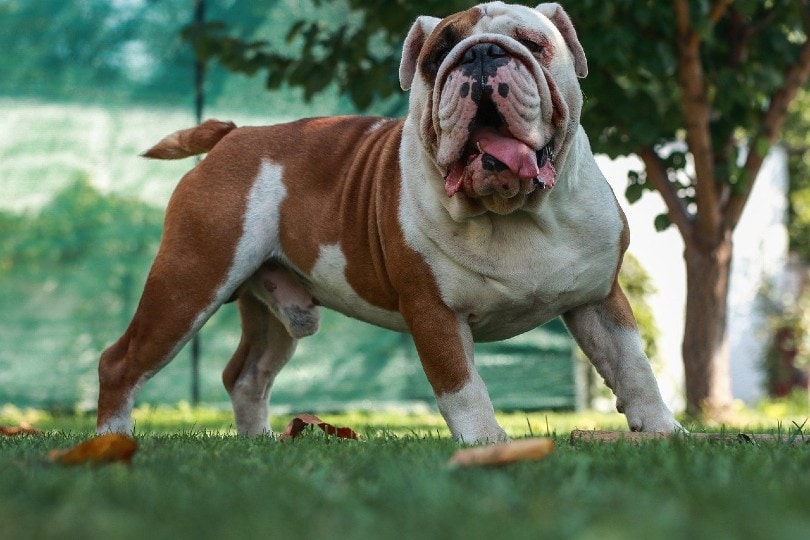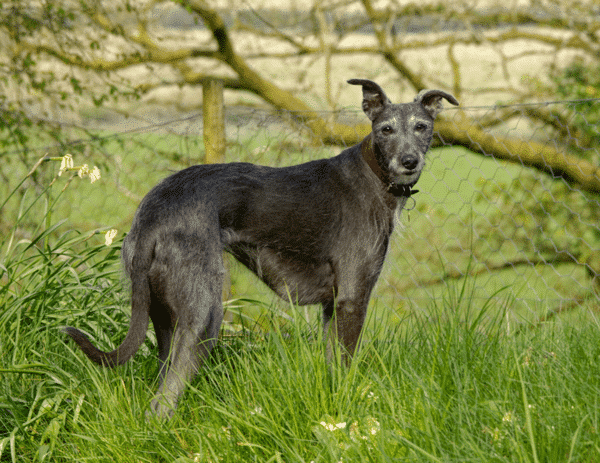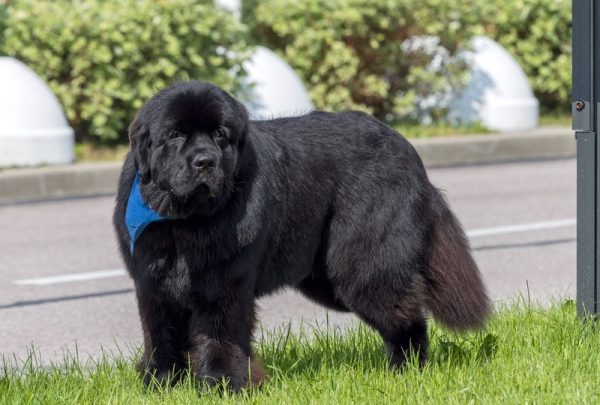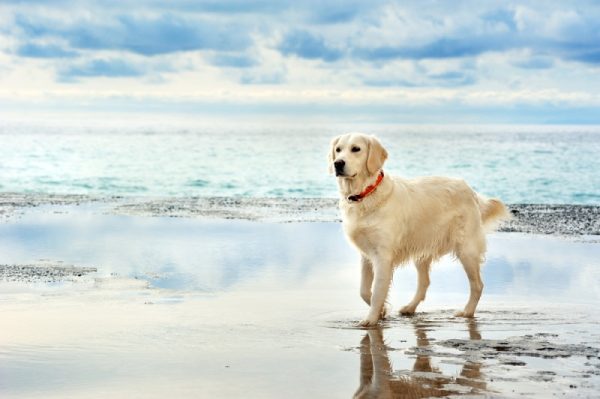In this article
The bulldogs that we know today—French, English, and American were bred from a medieval dog called an alaunt.1 Bulldogs were bred for their aggression—a trait important for legitimate farm work like rounding up cattle, boars, and the like for their masters—butchers and farmers. Aggression was also important for a sad, cruel ‘game’ that people back in those times used to play with the larger, more aggressive ancestor of the beloved dogs we know and cherish today.

Early Ancestors
Bulldogs were bred from an ancient and now extinct dog known as an Alaunt. Alaunts can be traced back to ancient Rome and the Alan people. These were nomadic people of what is now Iran who were known to be excellent breeders and warriors.
Alaunts were bred for reasons similar to those of their Bulldog descendants. They were excellent for herding, as guard dogs, and used in battle. Some people believe that bulldogs were bred from Mastiffs, and there is a little debate around the issue as Alaunts and Mastiffs are very similar. It is also thought that Mastiffs and Bulldogs may share the alaunt as a common ancestor.
Some of this confusion is due to how terminology around the word “alaunt” changed. Long ago, it was a specific breed or set of breeds. However, because they were working dogs, the term grew to encompass the job more than the breed. Likewise, the term “mastiff” was simply used to describe a big dog, so things were muddied.
One clue lies in the Cuban Mastiff, which looks very similar to a French Mastiff of the day. This was called a Burgos Mastiff, which back in the 1600s bore a striking resemblance to the Bulldogs of modern times!
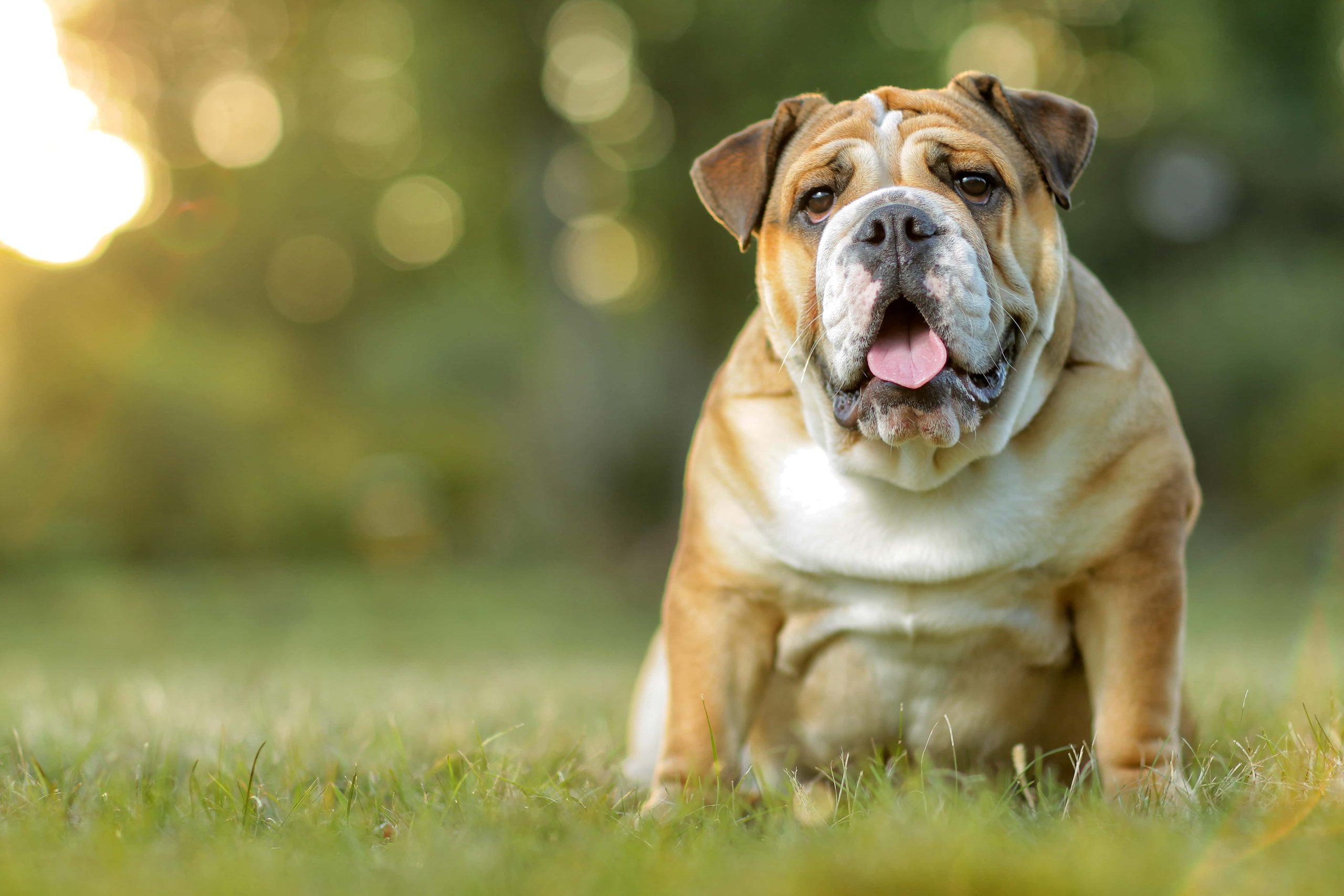
The Sad Story of How Bulldogs Were Bred
Unfortunately, there is no way to tell the story of the Bulldog without explaining a horrible ‘game’ that was very popular in colonial times. Brace yourself—bull-baiting, as it was called, was an exercise in cruelty in which farmers would tether a bull to a post or fence. They would then unleash packs of dogs—often Mastiffs. The dogs were trained to bite the nose of the bull and wrestle it to the ground. They would either accomplish this or be killed trying.
As these dogs were bred for strength, aggression, and very powerful bite, the breed which we know today as the Bulldog emerged in the British Isles, during the 1600s. Of course, these dogs did also perform legitimate work in which they also needed a high degree of toughness, and one must assume that not everybody participated in this cruelty. The practice was outlawed in the early 1800s, and while the popularity diminished, the Bulldogs became an export to places like France and America. To understand the American strain of Bulldog and its differences, we will first explore the English lineage as a point of reference.
Bulldogs were also crossbred with white Terriers to create a sturdy dog that was built for the other cruel ‘sport’ of the day—dogfighting. This was the birth of the Bull Terriers, otherwise known as the Pitbull family. A story for another day. If people had left well enough alone, Bulldogs might more closely resemble their crossbred Pitbull cousins, but that was not how it was to play out.
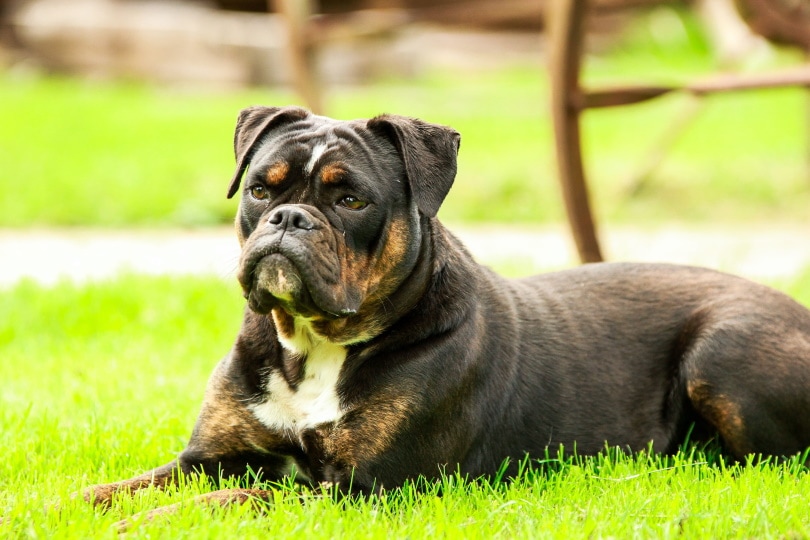
How the Bulldog Gained Its Modern Features
As you can probably imagine, a little French or English Bulldog as we know them wouldn’t stand a sporting chance at submitting a bull. That’s because bulldogs more closely resembled mastiffs back around the 1700s to the 1800s. It wasn’t until the practice of bull-baiting was properly outlawed and enforced in 1835, during the Victorian era, that they would take on the size and shape that we know today.
The Bulldogs of the 1700s were at some point crossbred with the Pug. As time went on along with the practice of crossbreeding, Bulldogs’ features became more and more exaggerated. It was a common practice of the day to breed selectively until the animals were simply caricatures of their ancestors, and sadly this has led the Bulldog down a painful path.
The Anatomy of the Modern Bulldog (English and French)
Originally, Bulldogs were bred for strength, aggression, and pain tolerance. They were bred to be two things: tough and tenacious. Features that breeders of the day were looking for included size, depth of the chest, and short powerful jaws.
Since the breeders were so selective, genetic problems have begun to occur. Much like the royalty of the day, dogs weren’t bred with those who didn’t share traits, which led to inbreeding. The reason that purebred Bulldogs look so much like Bulldogs is the same reason that they experience health issues.
Small Bulldogs are very prone to hip problems, and breathing trouble associated with the brachiocephalic snout. They also suffer from skin problems associated with their wrinkles, and so many advocates and veterinarians are opposed to the continuance of selective pure breeding. But not all Bulldogs were bred to have brachiocephalic snouts. The American Bulldog looks very similar to its distant Pitbull cousin—but why?
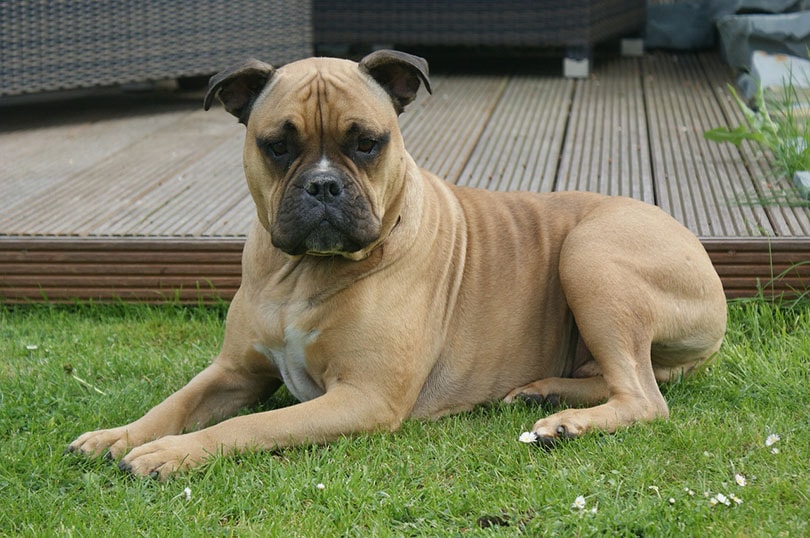
Why Are American Bulldogs Bigger and Less Wrinkly?
When earlier Bulldogs—the larger, more mastiff-resembling versions, were exported to the US, they weren’t crossbred with Pugs or for their Bulldog features. Not their aesthetic ones, anyways. Much of the land in America back then was very thick with brush and forest still, so it was far more practical for a farm to employ a dog than to build a fence. Well, it just so happened that bulldogs had plenty of farming experience in their genes. The Americans of the day didn’t want small, Pug-like Bulldogs for aesthetics, they needed big, strong Bulldogs to tend the field.
To protect the land.
As such, the American Bulldog was somewhat spared the fate of belabored breathing, skin infection, and hip dysplasia that the French and English versions endured.
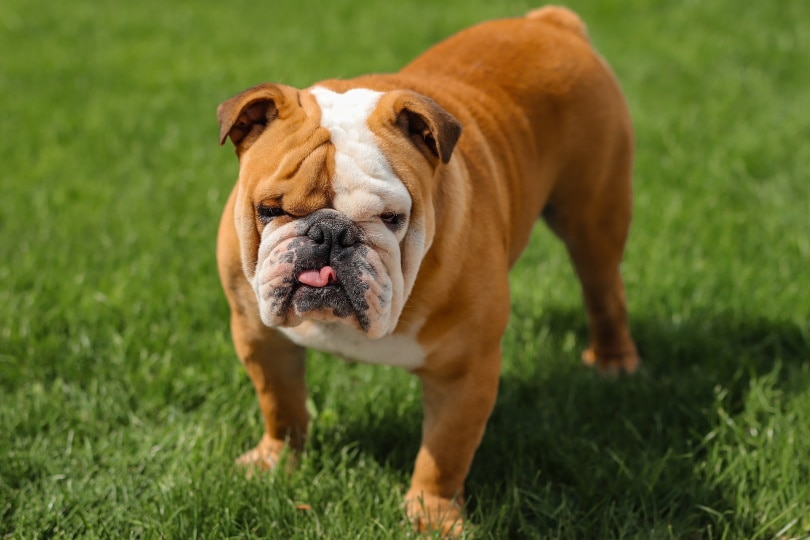

Conclusion
It’s somewhat difficult to process how such a lovely, brave, and beloved family pet could evolve from such difficult circumstances. Bulldogs along with their Pitbull cousins were bred to perform in a cruel world, and yet these dogs have evolved to have hearts of gold—or maybe they had them all along.
While human cultures and attitudes of the day certainly play their part in these ebbs and flows, it’s also comforting to think that their temperament is a testament to the heart of the Bulldog. Though selective breeding has contributed to a population that is prone to health issues, there are many happy, healthy, brave, and very silly Bulldogs who are cherished by their families to this day.
There are also many breeders who are heeding the calls to crossbreed. We don’t know what the future looks like for the Bulldog breed, but we can certainly work to ensure it is kinder to future bully generations.
Related Reads:
- Bullwhip (Bulldog & Whippet Mix)
- When to Switch to Senior Dog Food? What You Need to Know!
- Is There Pet Insurance for Chinchillas? What You Need To Know!
Featured Image Credit: BLACK17BG, Pixabay
